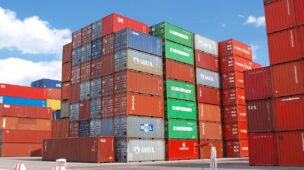Tempo de leitura: 5 minutos
Free Trade Zones or “FTZs” – areas in which governments grant businesses special incentives such as tax breaks and exemptions, and flexible rules on importation – have become increasingly popular. FTZs have been mainly set up with the purpose of attracting FDI, increasing exports, developing disadvantaged regions and creating new jobs. There are now around 4,500 zones in over 130 countries, and they have great impact on world trade (for example, accounting for more than half of Chinese exports). Their effects are felt far beyond individual countries, which raises a question of their consistency with WTO rules.
Although the WTO agreements do not expressly refer to FTZs, WTO law is applicable to them. Of particular relevance is the Agreement on Subsidies and Countervailing Measures (“SCM Agreement”). For a measure to constitute a subsidy covered by the SCM Agreement, it must represent a financial contribution (this could be a direct transfer of funds, tax credits or goods or services other than general infrastructure) by a government or public body. The financial contribution must confer a benefit on “specific” recipients.
The SCM Agreement distinguishes between “prohibited” and “actionable” subsidies.
A subsidy is explicitly prohibited if it is conditional upon export performance (“export subsidies”) or upon the use of domestic over imported goods. Least-developed WTO Members and any other WTO Member with a GNP per capita of less then $1,000 per year are exempted from the prohibition of export subsidies, but not from the prohibition of tying subsidies to the use the of domestic inputs. (Other developing countries were able to maintain export subsidies during extension periods granted to them pursuant to Article 27.4 of the SCM Agreement, but the last extensions expired on 31 December 2015.)
FTZs were originally focused squarely on export promotion: in order to enjoy government incentives, businesses would be subject to a mix of export share requirements (often up to 80%), prohibitions on domestic sales without authorization and taxation on domestic sales. Such measures had to be modified or eliminated to make FTZs compliant with the SCM Agreement prohibition on export subsidies, and WTO Members have indeed generally brought themselves into conformity. FTZ export subsidies have been converted into actionable subsidies by allowing FTZ products full access to domestic markets.
Actionable subsidies, though not prohibited, can be challenged in the event they have adverse effects on the interests of another WTO Member. But, as noted, only “specific” subsidies are subject to the SCM Agreement. Under Article 2.2 of the SCM Agreement, a subsidy limited to certain enterprises within a designated geographical region under the jurisdiction of the granting authority will automatically be “specific”.
In other words, if the central or local government creates an FTZ that does not cover the whole of its territory, the incentives will be “specific” and open to challenge. However, if a local authority creates an FTZ covering its entire area, that would be considered non-specific. In EC—Large Civil Aircraft, the Appellate Body concluded that subsidies granted by Andalucía and Wales were non-specific because they were available to all enterprises in Andalucía and Wales respectively. This is one way to avoid a challenge.
In addition, developing countries enjoy some leeway with actionable subsidies: claims of “serious prejudice” cannot be brought against them at the WTO dispute settlement mechanism (Article 27.9 of the SCM Agreement), although other WTO Members may still impose countervailing duties if the subsidies are causing injury to domestic industry.
The result is that while a WTO Member may offset the effect of a developing country subsidy on its domestic market, it may not normally use the WTO dispute settlement mechanism to address the impact of that same subsidy on its export markets (depending on the facts there may be other grounds on which to bring a challenge). As the Panel said in Brazil – Certain Measures Concerning Taxation and Charges,
“ a subsidy could be given separately to domestic producers of parts and components and to domestic producers of final products that use those parts and components, so long as the latter subsidy is not conditioned on the use of the domestic parts and components … in the production of the subsidized final products. If the subsidy to the producers of parts and components improved the price competitiveness of those products vis-à-vis imported products, any serious prejudice resulting from this situation could not be challenged.” (Para 7.505)
This is significant as most FTZs are located in developing countries.
Of course, the SCM Agreement is only applicable to trade in goods: its provisions do not apply to services subsidies. There is no special agreement on subsidies for services, but GATS regulates them insofar as they are not in compliance with a Member’s MFN and national treatment (“NT”) obligations. WTO Members can maintain MFN-inconsistent measures provided that they were grandfathered in 1995. These are rare and are mostly concentrated in the audiovisual sector (e.g. international co-production agreements which extend national treatment to films that would not otherwise qualify).
NT-inconsistent measures can be maintained in sectors where WTO Members have not made any commitments or where they have specifically reserved the right to do so. No fewer than forty WTO Members have made reservations. Most of these are horizontal (i.e. cut across all sectors). The fewer sector-specific limitations tend to be clustered in the audiovisual, cultural, sporting, education, hospital and medical sectors. This provides a very wide scope for subsidies designed to enhance international competitiveness, whether local or national.
Whatever you think about FTZs, it looks like they’re here to stay.






Os comentários foram encerrados, mas trackbacks e pingbacks estão abertos.